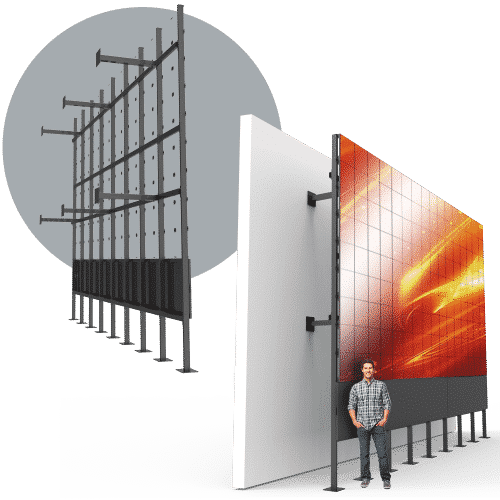
A common kind of LED video screen technology is the direct view Light Emitting Diode. This solution uses separate Light Emitting Diode modules that are arranged near together to form a large display. Direct view LED screens are known for their elevated brightness as well as vibrant colors, which makes them perfect for outdoor events or well-lit lit environments. They also have a wide sight angle, allowing means that people can view the screen clearly from various locations. This renders directly viewed LED walls a favored option for stadiums and outdoor events.
A different type of LED display screen solution is the LED-backlit LCD. Such solution merges conventional Liquid Crystal Display screens with LED illumination for improved luminosity and color precision. LED illuminated Liquid Crystal Displays are often used in interior environments, including retail centers as well as conference rooms. They provide superior visual clarity while are generally more cost-effective than direct view Light Emitting Diode screens. Nonetheless, they may often function as effectively in bright settings, since the illumination can sometimes wash out the hues.
A thirdly choice is the OLED video wall. OLED solution offers exceptional differentiation as well as hue depth compared to alternative kinds of screens. Every dot in an OLED screen emits its own luminescence, enabling for genuine dark tones and vibrant hues. Such makes OLED video screens especially attractive for uses which demand premium images, including gallery galleries or high-end retail stores. Nonetheless, Organic Light Emitting Diode technology can be more expensive and may not be as bright as direct view Light Emitting Diode screens, rendering it not appropriate for external applications.
Along with the aforementioned options, there are also multiple uses for LED video walls. These displays can be utilized for promotion, entertainment, and information presentation. For example, companies often use Light Emitting Diode display walls for digital signage to attract customers as well as advertise products. In amusement, these displays enhance the sight encounter at music events and events, offering lively backgrounds and captivating images. In business environments, LED video screens can be utilized for presentations, visual conferencing, and educational programs, helping to convey data through a aesthetically attractive way.
To summarize, Light Emitting Diode video screens are available in different types, every with its unique advantages as well as applications. Directly viewed LED screens are great for external applications, while LED illuminated Liquid Crystal Displays are more suitable for interior environments. OLED display walls offer exceptional visual quality check out the post right here yet may come at a higher price. Understanding these variations can help entities to make informed choices about which kind of Light Emitting Diode video screen best meets their requirements, whether for advertising, entertainment, or corporate use.